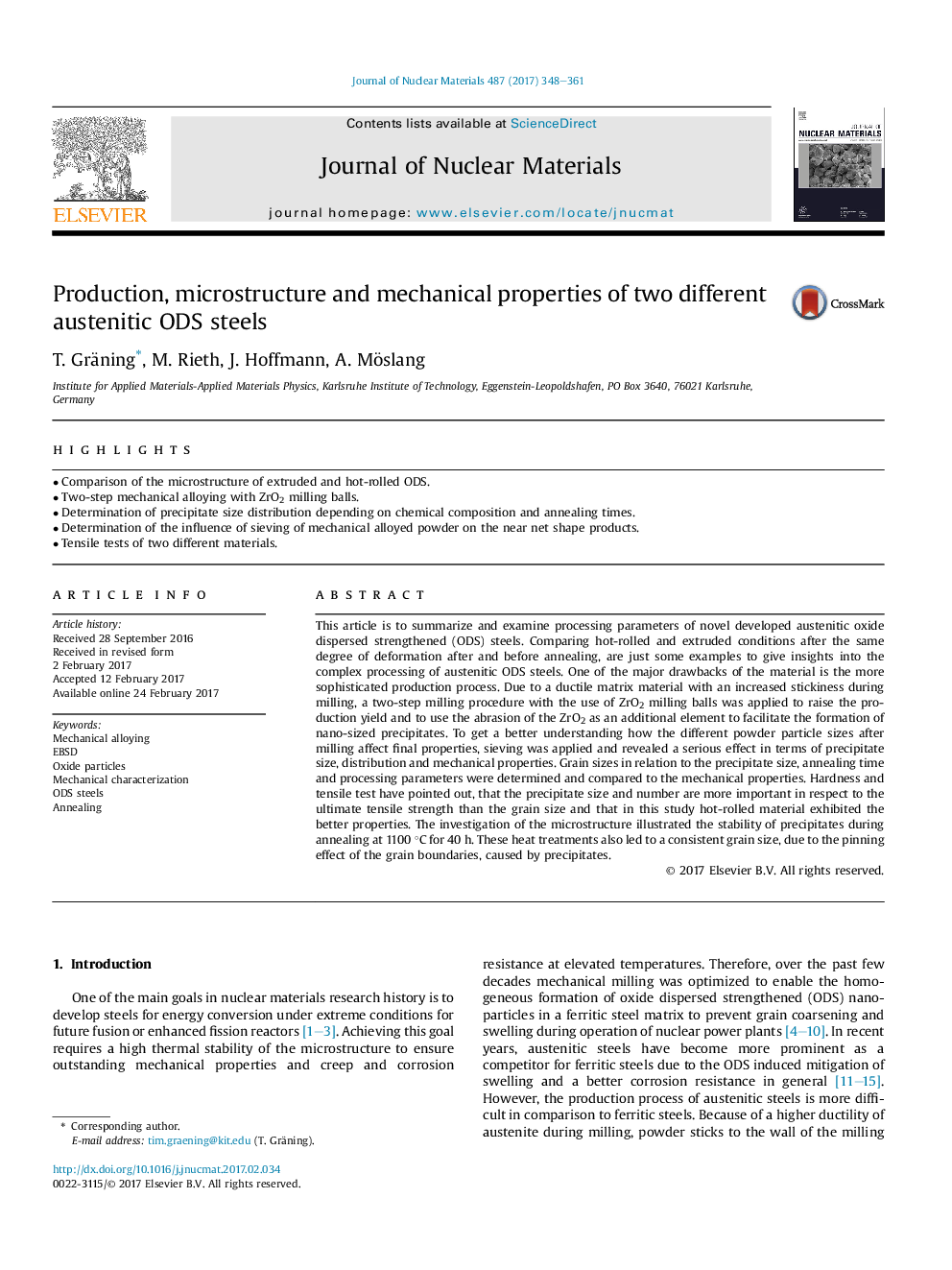| Article ID | Journal | Published Year | Pages | File Type |
|---|---|---|---|---|
| 5454118 | Journal of Nuclear Materials | 2017 | 14 Pages |
Abstract
This article is to summarize and examine processing parameters of novel developed austenitic oxide dispersed strengthened (ODS) steels. Comparing hot-rolled and extruded conditions after the same degree of deformation after and before annealing, are just some examples to give insights into the complex processing of austenitic ODS steels. One of the major drawbacks of the material is the more sophisticated production process. Due to a ductile matrix material with an increased stickiness during milling, a two-step milling procedure with the use of ZrO2 milling balls was applied to raise the production yield and to use the abrasion of the ZrO2 as an additional element to facilitate the formation of nano-sized precipitates. To get a better understanding how the different powder particle sizes after milling affect final properties, sieving was applied and revealed a serious effect in terms of precipitate size, distribution and mechanical properties. Grain sizes in relation to the precipitate size, annealing time and processing parameters were determined and compared to the mechanical properties. Hardness and tensile test have pointed out, that the precipitate size and number are more important in respect to the ultimate tensile strength than the grain size and that in this study hot-rolled material exhibited the better properties. The investigation of the microstructure illustrated the stability of precipitates during annealing at 1100 °C for 40 h. These heat treatments also led to a consistent grain size, due to the pinning effect of the grain boundaries, caused by precipitates.
Related Topics
Physical Sciences and Engineering
Energy
Nuclear Energy and Engineering
Authors
T. Gräning, M. Rieth, J. Hoffmann, A. Möslang,
